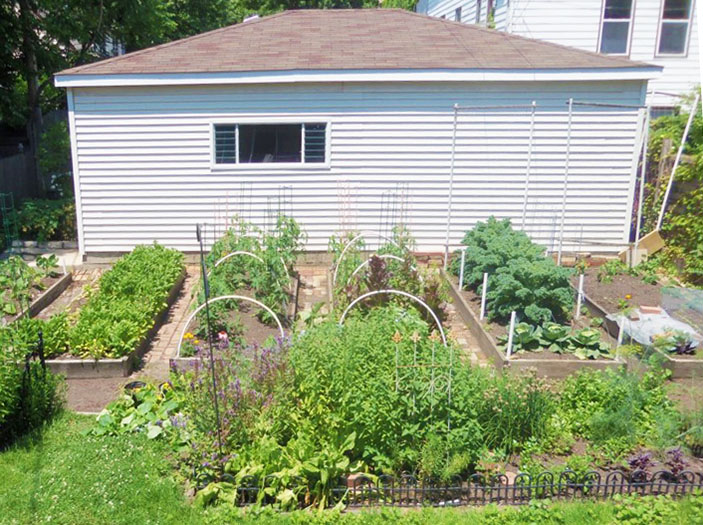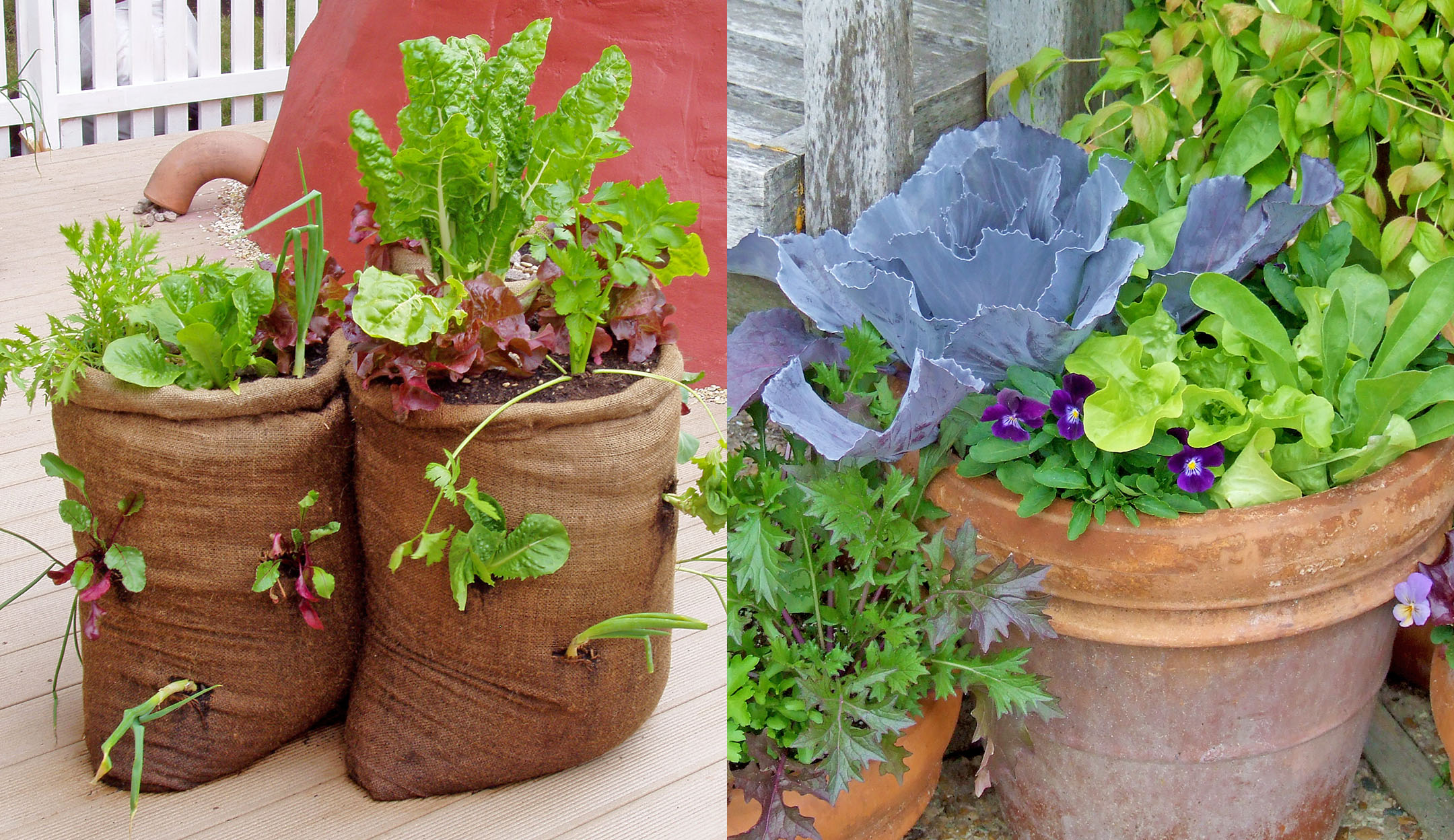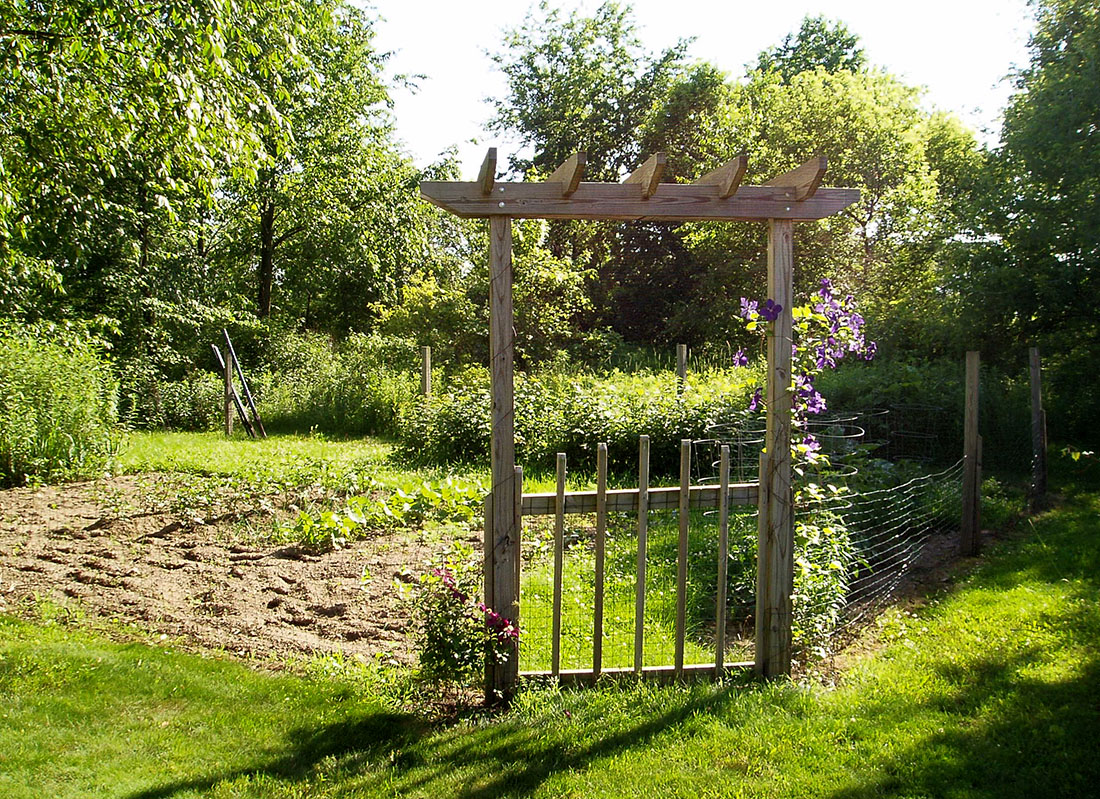
Smart Gardening: Choosing a smart site for your vegetable garden
DOWNLOADMay 12, 2016 - Denise Johnson and Pamela J. Bennett, Ohio State University. Developed and reviewed in collaboration with Michigan State University Extension.
Selecting the optimal placement of your vegetable garden is important for success. Understanding the essential key components including sunlight, water and good soil will ensure your garden bounty. Picking fresh vegetables from your own garden or patio container can be very rewarding. In addition, you may discover new foods to add to your plate and may influence others to try new vegetables.
To the new gardener, a word of caution: start small. Consider how much time and space you have available and do not start with a garden that may be more than you can manage. Depending on the amount of space and site conditions, you can consider a container vegetable garden, a small area with just a few plants, or a larger garden with a variety of vegetables.

Sun and water
Vegetables need sunlight in order to produce succulent fruits such as tomatoes or fleshy stems like asparagus. Plants use sunlight to convert carbon dioxide and water into food through the process of photosynthesis. When selecting a site, find an area that gets at least eight to 10 hours of full sun per day. West or south-facing sites are preferred. Vegetable production declines as sunlight decreases, yet some early season crops such as radish or lettuce may be able to be produced in an area that receives a partial day of shade.
Before you select the site, observe it for a few days to determine the amount of sunlight it receives. Is there sun in the early morning? Is the site in the shadow of neighboring trees, shrubs, fences or other structures? At noon, is the entire area in full sun? What are the light conditions at 2 p.m. and 4 p.m.? Take time to observe and make notes in order to locate the garden in the best area of your landscape. Keep in mind if you are observing sun patterns in winter or early spring that the sun will be more directly overhead in summer, somewhat changing where sunlight appears during the growing season.
Plants also require water for growth and food production. Locate your garden where you have access to a clean and consistent water source. You cannot depend on rain to consistently provide adequate moisture, especially when establishing young plants or during the drier part of summer. In addition, gardens closer to the house are more visible and you won’t succumb to the “out of sight, out of mind” problems that occur in the heat of the summer.

Fertile, well-drained soil
The soil needed for growing vegetables should be fertile and well-drained. A quick and easy drainage test is to dig a bucket-sized hole and fill it with water. Water should be completely drained from the hole within 24 hours. If there is still standing water, you should either select a new site or consider options such as raised bed gardens or improving the drainage by contouring the beds, allowing excess moisture to move away from the site. The pH should be in the range of 6.2 to 6.8 (slightly acid soil). A soil test will provide this information. Soil tests can be purchased online at the Michigan State University Extension Bookstore (search for E3154). You can also refer to the Smart Gardening tip sheet “Don’t Guess, Soil Test!” for more information. The results of your soil test will indicate the necessary amendments such as fertilizers or organic matter that are needed for good vegetable production.
Prior to choosing the site, investigate what might have been in this location previous to your garden. If you live in an older home where the potential for lead is higher (lead paint was used on older homes), indicate that you require a lead test on your soil test form.
The site should be level and free of large roots and rocks. A level area will prevent water from running off and washing away seeds as well as soil erosion. Avoid low areas where water does not drain. For good plant health, roots require moisture but also need oxygen. Standing water or heavily compacted soil does not allow roots to breath. Refer to the tip sheet “Smart gardens begin with healthy soil” for information on improving your soils.

Planting near walnut trees
Planting under or near a black walnut tree (Juglans nigra) is not recommended because all parts of the tree produce a chemical called juglone, which is toxic to certain vegetables, especially tomatoes, potatoes, eggplant and peppers. There are some vegetables that are not affected by juglone. These include snap and lima beans, onions, beets and parsnips. If you do have a sunny spot near a walnut tree and want to grow plants that are susceptible to walnut toxicity, consider a raised bed in which you provide new soil for plant growth.
If you face challenges locating the ideal site, do not despair. There are many gardening options such as container gardening or elevating the garden above ground level and creating a raised garden. You can grow potatoes in a trash can, herbs in a bag of top soil or tomatoes in a hanging basket. Wherever you find a sunny location, there is the possibility of growing vegetables.

For more information on a wide variety of smart gardening articles, or to find out about smart gardening classes and events, visit the Gardening in Michigan website.
This publication is supported in part by the Crop Protection and Pest Management Program 2017-70006-27175 from the USDA National Institute of Food and Agriculture. Any opinions, findings, conclusions, or recommendations expressed are those of the author(s) and do not necessarily reflect the view of the U.S. Department of Agriculture.



 Print
Print Email
Email